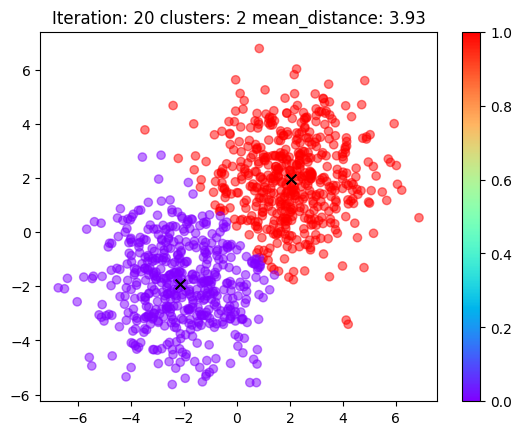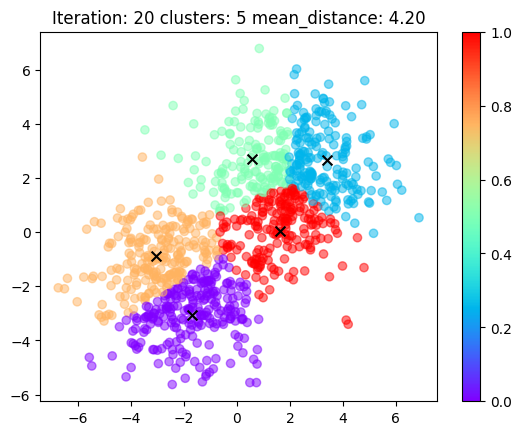| two gaussians dataset | kmeans with 2 clusters | kmeans with 5 clusters |
|---|---|---|
 |
 |
 |
Minimal, readable, simple code for k-means algorithm in Pytorch.
Just several lines of code to understand the k-means algorithm intuitively.
# assume X is a tensor of shape (n_samples, d_features)
# and we want to cluster these samples into v_clusters clusters
X = torch.rand(n_samples, d_features)
# random select v_clusters rows from X as initial codebooks, (v_clusters, d_features)
codebooks = X[torch.randint(num_samples, (v_clusters,), dtype=torch.long)]
for i in range(num_iterations):
# Euclidean distance, (n_samples, v_clusters)
distance = torch.cdist(X, codebooks, p=2)
# assign each sample to the nearest codebook, (n_samples,)
codes = distance.argmin(dim=-1)
# update codebooks with the mean of samples in the same cluster
for k in range(v_clusters):
codebooks[k] = X[codes == k].mean(dim=0)
# codes: the cluster index or label of each sample, (n_samples,)
# codebooks: the final codebooks, (v_clusters, d_features)For more details, please refer to the kmeans.ipynb, here also contains the animation of processing k-means algorithm.
pip install numpy torch einopsNote:
utils.pycontains the code to generate the two gaussians dataset and the animation code.more.pycontains some of the product_quantization demo code when I was struggling with fairseq wav2vec2.0😭😭😭.